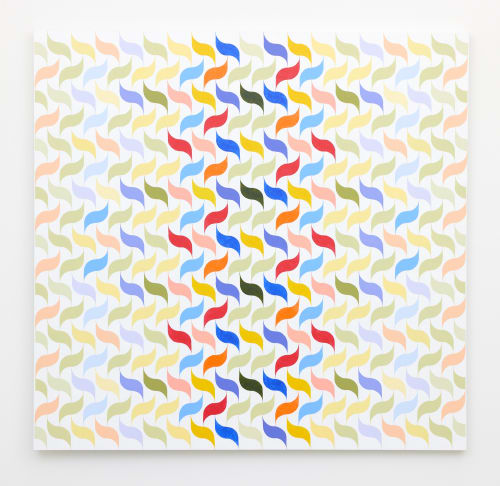Jon Tootill (Ngāi Tahu, Pākehā, b.1951) is a contemporary painter celebrated as a master of contemporary geometric abstraction in Aotearoa. The precision and lucidity of the artist’s imagery is often compared with New Zealand masters Gordon Walters and Theo Schoon.[1]
Tootill’s practice is an exploration into the seasonal colours in Aotearoa’s landscape. Focussing on the colours of Koanga (spring), Raumati (summer), Ngahuru (autumn) and Takurua (winter) his artworks reflect the inspiration he finds from the hues of flora and fauna that surround him over the year.
Drawing from his Māori heritage Tootill presents engaging graphic interpretations of traditional lattice work and raranga (weaving) in his paintings, whilst in others inspiration from whakairo (Māori carving) can be recognised.
Art historian Michael Dunn notes:
‘By searching for his roots in his Māori heritage and view of the natural world in art and life [Tootill] has found a personal space full of feeling and visual meaning.’
Tootill has exhibited in group and solo exhibitions nationwide. Recent exhibitions include Raumati / The Colours of Summer, Sanderson Contemporary, Tāmaki Makaurau Auckland - solo (2023) and Whakamoe Tau / The Seasons, Sanderson Contemporary, Tāmaki Makaurau Auckland - solo (2022). Recent commissions and awards include Nga Kopi o Toi, public commission for Otara Town Centre, The National Contemporary Art Award - Finalist, New Zealand Painting and Printmaking Award – Finalist, Harpers Art Award – Finalist, Adam Portraiture Award – Finalist, the Trust Waikato Contemporary Art Award and the Ida Eise Painting Award.
Tootill’s works are held in numerous public and private collections in NZ Aotearoa and worldwide including the collection of Auckland City Council, the Ministry of Foreign Affairs and the New Zealand Government art collection.
[1] Dunn, M. (2022, November 14). Seasoned Paintings - Recent Work by Jon Tootill. Art New Zealand, Summer 2022 (Issue 184).
